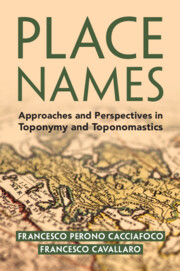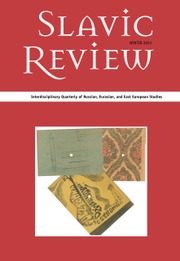Place Names
Approaches and Perspectives in Toponymy and Toponomastics
$34.99 (P)
- Authors:
- Francesco Perono Cacciafoco, Xi'an Jiaotong-Liverpool University, China
- Francesco Cavallaro, Nanyang Technological University, Singapore
- Date Published: March 2023
- availability: Available
- format: Paperback
- isbn: 9781108748247
$
34.99
(P)
Paperback
Other available formats:
Hardback, eBook
Looking for an examination copy?
If you are interested in the title for your course we can consider offering an examination copy. To register your interest please contact [email protected] providing details of the course you are teaching.
-
What are place names? From where do they originate? How are they structured? What do they signify? How important are they in our life? This groundbreaking book explores these compelling questions and more by providing a thorough introduction to the assumptions, theories, terminology, and methods in toponymy and toponomastics – the studies of place names, or toponyms. It is the first comprehensive resource on the topic in a single volume, and explores the history and development of toponyms, focusing on the conceptual and methodological issues pertinent to the study of place names around the world. It presents a wide range of examples and case studies illustrating the structure, function, and importance of toponyms from ancient times to the present day. Wide ranging yet accessible, it is an indispensable source of knowledge for students and scholars in linguistics, toponymy and toponomastics, onomastics, etymology, and historical linguistics.
Read more- Provides the first comprehensive work on Toponymy and Toponomastics
- Introduces the study of Toponymy and Toponomastics by associating it with several different disciplines
- Explains the most significant methods in toponymics, illustrated through case studies
Reviews & endorsements
‘This book brings together ideas that conceptualise the practices of place naming. Grounded in a multidisciplinary fashion – from sociolinguistics to geography – this volume is innovative as it examines place names according to their relations with histories, cultures, and societies in order to understand their historical and linguistic origins as well as the role they play in people’s everyday lives.’ Remus Creţan, West University of Timișoara, Romania
Customer reviews
Not yet reviewed
Be the first to review
Review was not posted due to profanity
×Product details
- Date Published: March 2023
- format: Paperback
- isbn: 9781108748247
- length: 280 pages
- dimensions: 228 x 152 x 17 mm
- weight: 0.47kg
- availability: Available
Table of Contents
1. Introduction
2. Language change
3. Historical toponomastics
4. Toponymy and the historical-linguistic reconstruction of proto-languages
5. Diachronic toponymy
6. Landscape and toponymy
7. Historical toponomastics and historical geography
8. Synchronic toponymy
9. Place names and society
10. Toponymy and cartography.
Sorry, this resource is locked
Please register or sign in to request access. If you are having problems accessing these resources please email [email protected]
Register Sign in» Proceed
You are now leaving the Cambridge University Press website. Your eBook purchase and download will be completed by our partner www.ebooks.com. Please see the permission section of the www.ebooks.com catalogue page for details of the print & copy limits on our eBooks.
Continue ×Are you sure you want to delete your account?
This cannot be undone.
Thank you for your feedback which will help us improve our service.
If you requested a response, we will make sure to get back to you shortly.
×







